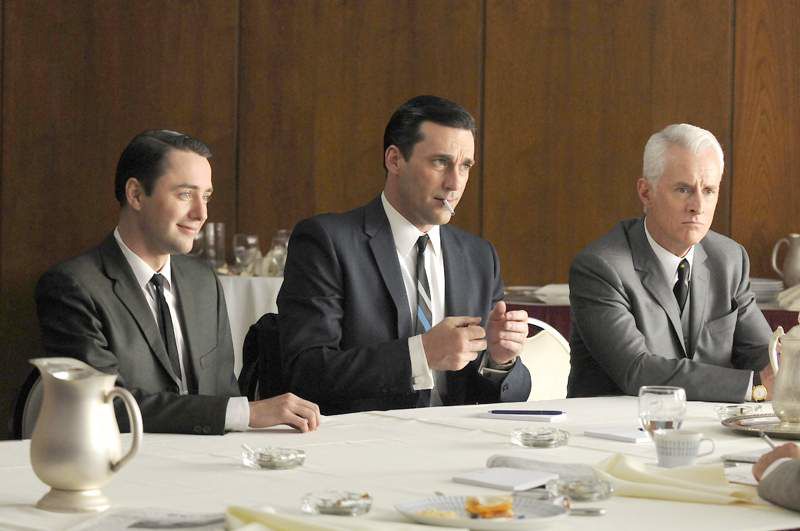Is the magic of ‘Mad Men’ contagious?
Published 5:00 am Tuesday, May 31, 2011

- Vincent Kartheiser, from left, Jon Hamm and John Slattery in a scene from the AMC hit “Mad Men.” Two new fall shows, NBC's “The Playboy Club” and ABC's “Pan Am,” are hoping to cash in on the allure of 1960s bad behavior popularized by “Mad Men.”
NEW YORK — The future of television lies squarely in the past, preferably on a bed with a blond bombshell.
That’s where you’ll find Nick, the hero of NBC’s upcoming 1960s drama “The Playboy Club,” who’s described by one lady friend as “everything you want and everything you don’t.”
With his well-oiled hair and sharply creased pocket square, he looks like he just stepped out of an ad designed by Sterling Cooper Draper Pryce. Surrounded by a gaggle of pink-eared, cotton-tailed friends, Nick lives in a world where, as Hugh Hefner’s voice-over explains, “everything was perfect, where life was magic, where … fantasies became realities for everyone who walked through the door. It wasn’t the ’50s anymore.”
Remember nostalgia? It used to be more original. Back in 2007, when “Mad Men” brought its cigarette-puffing, garter-snapping, five-martini-lunch vision to AMC, the idea of letting viewers revel in the thrill of 1960s-endorsed bad behavior, while also allowing them to keep the moral high ground of our relatively enlightened times, felt groundbreaking. Now, with two 1960s dramas due this fall, NBC and ABC are following suit behind AMC — and that suit looks a lot like Don Draper’s gray flannel number.
Both set in 1963, with civil rights, the Cold War and the sexual revolution on the horizon, NBC’s “The Playboy Club” focuses on the bunnies working in gangster-run Chicago while ABC’s “Pan Am” follows a team of stewardesses, one of whom might be a spy.
Each show feels like a “Mad Men” spinoff: “Pan Am” recalls the blue-uniformed flight attendant who helped Draper get his wings, while “The Playboy Club” echoes advertising boss Lane Pryce’s affair with a bunny.
By combining the smart historical references and character studies of cable with the broad reach of network television, NBC and ABC are betting that they’ll achieve all the critical acclaim earned by “Mad Men” with a ratings boost that trumps its roughly 2.3 million viewership.
Jack Orman, the creator of “Pan Am,” admits that “Mad Men” paved the way for his show. “It certainly helped in the pitching stage, because it showed that the ’60s could work for a contemporary audience,” he says. Before “Mad Men,” Orman believes, there hadn’t been a truly successful series set in that decade since “The Wonder Years.”
Of course, the allure of the 1960s remains somewhat timeless, especially when it mirrors our own times.
“These shows represent a slice of 1960s America that’s closer to modern day,” says Michael Allen, a history professor at Northwestern University who teaches a class on “Mad Men” and the 1960s. “It’s a moment that is cosmopolitan, focused on large cities, business and travel, but it’s also quite conservative. The world is mostly white. It’s all well-educated. It’s not really representative of how most Americans lived at that time, but it’s very advertiser-friendly today, because it reflects upper-middle class values.”
Demographically, 1960s period dramas also extend the networks’ audience. Older viewers watch them to reflect on their own experiences during that decade. Younger audiences are often drawn to the retro style, as well as their curiosity about how their parents lived.
“It’s a built-in four-quadrant zinger,” says Chad Hodge, creator of “The Playboy Club.” “You’ll watch no matter how old or young you are, and it appeals to both men and women.”






